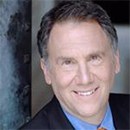Stellantis pauses launch of automated driving tech due to 'very limited' market demand
Published in Business News
Stellantis NV has pulled back plans to launch a Level 3 autonomous driving platform in its vehicles, saying there's a limited market for the technology.
The transatlantic carmaker in February said it had developed an in-house automated driving system called STLA AutoDrive 1.0 that would make driving in dense urban areas easier. Under that Level 3 system, drivers would be able to take their hands off the wheel and eyes off the road at slower speeds, and future updates were expected to allow high-speed use.
But the Jeep and Ram maker confirmed Tuesday that due to a "very limited" current market for autonomous driving, it isn't planning to launch the new technology anytime soon. "Once the market opens up and becomes more receptive, we will move forward with introducing this advanced technology," Stellantis spokesperson Fernão Silveira said in an email.
Reuters first reported the automaker's in-house Level 3 system had been shelved. The news outlet, citing several people familiar with the issue, said high costs, technological challenges and consumer demand had been factors in the decision.
Back in February, the automaker had also acknowledged that — while the technology was "ready for deployment" and could be used across all types of Stellantis vehicles — there would be initial challenges with customer demand for such a high level of autonomous driving.
More advanced vehicles now typically offer up to Level 2 automation, such as adaptive cruise control, lane-centering and self-parking. The highest level of automation classification is Level 5, where a car could drive itself in all types of conditions. Stellantis had promised its now-paused AutoDrive 1.0 system would allow drivers to catch up on emails, read a book or watch a movie during their commute.
Stellantis continues to develop a more refined Level 2, or L2+, driver assistance technology as part of its AutoDrive program, Silveira said. Those efforts aim to build on automated features — like hands-free driving on certain approved roads — that are already offered on electric vehicles like the Jeep Wagoneer S and Dodge Charger Daytona, as well as some other Jeep SUVs and Ram pickups.
There is still internal work underway on automated driving technology, Silveira said, but the automaker has also been "working with selected suppliers for specific modules, such as maps." aiMotive, a tech startup the carmaker bought in 2022, will play a major role in the next phase of AutoDrive development, he said.
Stellantis has laid out ambitious technology development plans in recent years, from autonomous driving to growing the in-car software side of the business, where it maintains there is large potential to grow customer subscriptions for things like voice assistants, route-planning features and fleet vehicle management programs. It went on a huge developer hiring spree in recent years.
But there have been struggles, such as with early software glitches in the automaker's EVs and the demise of a significant partnership on in-car technology with Amazon.
©2025 www.detroitnews.com. Visit at detroitnews.com. Distributed by Tribune Content Agency, LLC.












Comments